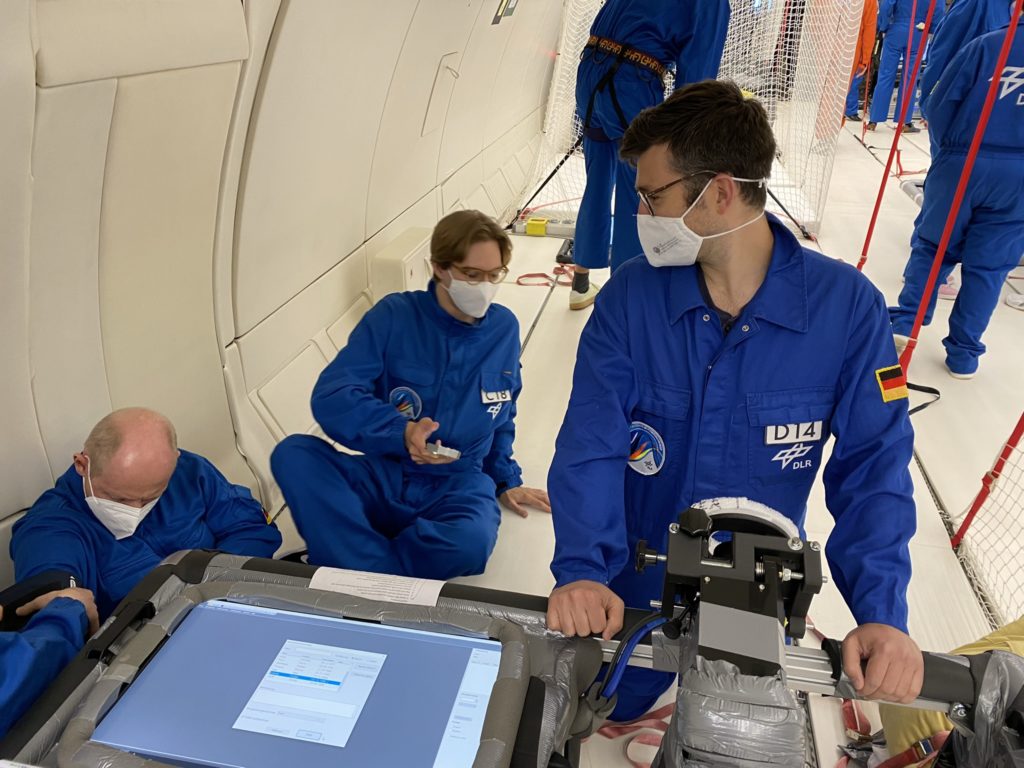Astronauts and jet pilots regularly put themselves in extreme situations that can affect your health and trigger ailments. Das German Aerospace Center (DLR) is constantly researching ways to make expeditions safer. We are part of a DLR-funded series of investigations into the effect of weightlessness on the so-called microcirculation. The central question here is how a lack of gravity affects the circulation of the smallest vessels in the human body.
Repeatedly, pilots and astronauts have been shown to have problems with their blood circulation after returning to earth. Within the scope of the project, approx. 25 test subjects will be tested at a Parabolic flight exposed to weightlessness. Before, during weightlessness and after the flight, the individuals are examined. During this process, a version of our worldwide unique DVA high-precision image recordings of the retina of the participants’ eyes are made and analyzed. This allows direct conclusions to be drawn about the behavior of the retinal vessels. This in turn allows conclusions to be drawn about the blood flow in the smallest vessels, whose diameter is less than 100 microns. As a result, it should be possible to better describe how the human circulatory system reacts to conditions in space.
To ensure that the examinations run smoothly in weightlessness, the medical technology used must be adapted by Imedos. The devices must withstand g-forces of levels 9-10.9. They must not loosen or bend under these high loads. In addition, the overall height is severely limited. All devices must be very flat to create optimal conditions.
For this purpose, both the camera and the examination table as well as the monitor of the Imedos apparatus must be significantly modified mechanically.
We are one of six partners accompanying the DLR project. The project is led by Prof. Dr. Dr. med. Christian Jung, senior physician at the University Hospital for Cardiology, Angiology and Pneumology in Düsseldorf. The first project meetings have already taken place. Thereby we were able to visit the converted airplane with which the parabolic flight will be performed in France in summer.
In preparation for the investigations, a detailed analysis was carried out by Prof. Dr. Dr. Jung’s team, among others. This involved the influence of weightlessness on the part of the blood circulation that takes place in the large vessels such as the arteries. The participants were weightless for about 20 seconds during the parabolic flights performed for this purpose. In the accompanying studies, a relevant influence on the macrocirculation was found. The findings are now to be transferred to the microcirculation.








